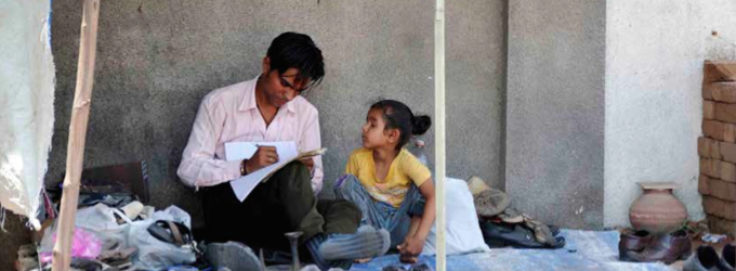
Search
MPI and MODA: Disentangling the Differences Between a Policy Tool and Advocacy Instrument

Target 1.2 of the Sustainable Development Goals is, by 2030, to reduce at least by half the proportion of men, women and children of all ages living in poverty in all its dimensions according to national definitions. To monitor this goal, countries will have to define and measure multidimensional poverty. There are a few examples of measures of multidimensional poverty, and sometimes it might be difficult for policy makers and civil society alike to distinguish one multidimensional measure from another. One pair of measures whose similarities and differences are not well understood are the Multidimensional Poverty Index (MPI) and the Multidimensional Overlapping Deprivation Analysis (MODA). This article attempts to shed some light on this issue.
One first source of confusion is that both MPI and MODA refer to families of measures, rather than two specific measures. Therefore, in order to avoid spreading misconceptions, it is important to be precise about what particular examples of the families of measures one is comparing. For example, it has been said that while MODA identifies poverty at the level of the child, the MPI identifies poverty at the household level. This is not accurate. The MPI is a general framework. There are examples of child MPIs, which identify each child as poor or non-poor (e.g. Bhutan’s Child MPI and Panama’s MPI for Boys, Girls and Adolescents). Many MPIs are focused on the household – all national MPIs to date adopt this focus for example. Others focus on the youth, women or other groups.
To illustrate the key points of overlap between the MPI and MODA approaches we compare a child MPI and a child MODA, both built using the same dimensions, indicators and weights. The similarities are important: both measures aim to measure multidimensional poverty, are based on the Alkire-Foster counting method to varying degrees and complement monetary indicators. Yet, they differ in how they structure indicators into dimensions. Here, we will focus not on conceptual inspirations for each measure (Amartya Sen’s capability approach and child rights), but rather on technical distinctions.
The child MPI would identify poverty at the level of the child, combining deprivations that affect all household members (e.g. lack of improved sanitation) with deprivations that directly affect that child (e.g. undernutrition). While indicators are clubbed into dimensions for ease of communication – assisted delivery and immunisation might form the dimension of health, for example – the profile of the child’s deprivations is made at the level of the indicator, rather than the dimension. Thus each indicator’s contribution to overall poverty can be traced. In terms of policy incentives, any reduction in any deprived indicator of the poor, reduces MPI. The MPI is generally disaggregated by any groups for which the data are representative and broken down by indicators to provide a detailed picture of where and how multidimensional poverty manifests itself. One poverty cut-off is usually used to define acute poverty and alternative cut-offs are reported in the tables.
To understand the value-added of different multidimensional poverty measures it is important to carefully scrutinize them and consider which primary objectives they are structured to fulfil.
MODA focuses exclusively on children. Its dimensions must be equally weighted. To capture the varying relevance of rights across the child life cycle, MODA has two different specifications: one for children aged 0 to 4 and another for children aged 5 to 17 years old. In both cases the indicators are defined at the household level; for instance, water, sanitation and housing account for more than half of the rights included in the measure. The indicators present in the data are sorted according to the child right they best reflect and then aggregated into a sub-index for each dimension. MODA counts the dimensions in which a child is deprived. Thus, the overall index can be broken down by dimensions but not by indicators. In terms of policy incentives, MODA decreases only when a child who was deprived in a dimension becomes non-deprived in all indicators associated with that dimension. Rather than defining poverty using a single poverty cut-off, MODA typically presents the poverty figures for all possible poverty cut-offs, giving an idea of the complete distribution of children’s number of unmet rights.
The difference between MODA and MPI, methodologically speaking, lies not in the child focus (MPIs can also be constructed for children), nor in the application of multiple poverty cut-offs. The main methodological difference is the decision whether to aggregate all indicators within a dimension into a sub-index or to enter each indicator individually. MPI does not aggregate because its primary objective is to provide policy guidance. It is useful to tell a policy maker that there are two health challenges: 1) these children are poor and lack DPT (diphtheria, pertussis and tetanus vaccines) immunisation and 2) these children live in areas that lack assisted delivery facilities. Policy makers will know if interventions are successful in reducing either problem, then MPI will be reduced (this is called dimensional monotonicity). In contrast, the primary objective of MODA is to provide an advocacy tool that draws attention to child rights. Because of this purpose, it is structured to give alarming headlines. In the example above, MODA will communicate that a certain number of children are deprived in health: either they lack immunisation, a skilled birth attendant or both. It is not clear from the dimensional aggregate which deprivation is more prevalent, nor which children suffer both deprivations at the same time. This makes MODA less precise for policy. However, if the deprivations are identical then, by definition, the number of children affected in MODA will be larger, because of the dimensional sub-indices. So, the MODA advocacy function will be fulfilled.
To understand the value-added of different multidimensional poverty measures it is important to carefully scrutinize them and consider which primary objectives they are structured to fulfil.
This article was published in Dimensions 7.
















